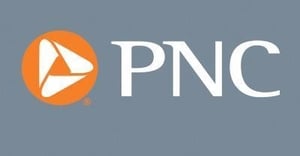
Still Riding New Orders Momentum
- The topline ISM Services PMI came in at 52.6 for February 2024
- The Business Activity component of the ISM Services PMI jumped to 57.4, strongest since September 2023
- Services industries’ pricing trends backed down from January’s spike, still high at 58.6 for February 2024
- Services industry hiring couldn’t maintain January’s bounce, back below breakeven at 48.0 for February 2024
The ISM Services PMI report was down modestly in February 2024, posting a topline result of 52.6 for the month. The index spent all of 2023 in expansionary territory and continues looks to continue riding consumer demand for services in the coming months. Gains in the New Orders and current Business Activity components were the primary drivers of February’s still-healthy topline result.
The ISM Services index measures net activity among service industry businesses, with a reading of 50 implying an even split between those indicating expansionary and contractionary conditions. February 2024’s monthly decline gives back some of the index’s January spike, but given labor market tightness and restrictive monetary policy, readings much above breakeven will be hard to come by. Consumer spending is still healthy across the U.S. economy, and continues to lean toward services and experiences, as opposed to purchases of goods. The New Orders component of the ISM Services PMI report confirms this with a reading of 56.1 in February – its strongest showing since August of last year and a second consecutive month of acceleration to start 2024.
The Business Activity component index of the ISM Services PMI report also posted a continuation of gains to open the new year. The February 2024 result of 57.2 for the Business Activity component – reflecting service industry businesses’ ability to meet demand – was the strongest seen since August 2023. Service providers’ ability to continue expanding on the Business Activity front, however, is tied to their results for the Employment component of the ISM Services PMI, which itself dropped below the expansionary threshold of 50 in February, to 48.0. A lack of available workers places a cap on service industry businesses’ ability to expand even if demand warrants. The alternative of increasing capital spending toward automation is also made difficult as interest rates are set to remain higher for longer, per Federal Reserve policy, until more progress is made toward inflation reading a stable 2% on average.
Regarding inflationary pressure, the rise in costs faced by services-oriented businesses cooled moderately in February 2024 with a result in the ISM Services PMI report’s Prices category falling to 58.6 after a spike to 64.0 in January. Readings on Prices in the high-50s are a far cry from the persistent results of 70+ at the worst of the ongoing battle with inflation, but still indicate that price pressure risks throughout the economy have not yet been fully quelled.
The greatest threat to the Fed’s goal of re-establishing a 2% average pace of consumer price inflation is the exceptionally tight U.S. labor market that leaves businesses no choice but to raise wages in order to attract and retain talent. With service industry businesses still seeing the lion’s share of consumer demand, they will continue to bear the greatest challenge of balancing pricing pressures with demand.
The PNC Financial Services Group, Inc. is one of the largest diversified financial services institutions in the United States, organized around its customers and communities for strong relationships and local delivery of retail and business banking including a full range of lending products; specialized services for corporations and government entities, including corporate banking, real estate finance, and asset-based lending; wealth management and asset management. For information about PNC, visit www.pnc.com.














